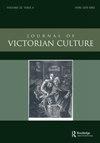Learning ‘The Customs of their Fathers’: Irish Villages in Chicago’s Columbian Exposition, 1893
IF 0.5
3区 历史学
Q2 HISTORY
引用次数: 0
Abstract
This article examines how a transnational vision of Ireland was created in the United States by two philanthropic women in Chicago’s Columbian Exposition of 1893. Lady Aberdeen and Alice Hart each used accessible images of Ireland and the bodies of white exhibited women to authenticate their narrative of dying rural industries that needed to be revived. Their specific visions of Irish development and survival were located against the backdrop of significant Irish migration to the United States and capitalized on feelings of nostalgia popular among the newly settled Irish-American population. By trading on discourse of an Irish whiteness, a Scotswoman and Englishwoman foregrounded Ireland’s place in the imagined hierarchy of civilizations popular in the nineteenth century. They materially, physically and performatively manufactured Ireland as being at the apex of civilization narratives – positioned as the Irish Villages were at the start of the Midway Plaisance. If the Irish only laboured enough, produced enough, and consumed enough, their symbolic place in the fairground would ascend to the main arena of industry, technology, and capitalism – ensuring the survival of Ireland’s people and land. Through interrogating the multiple ways in which women’s bodies, rural industries, and commerce interacted in the space of the Fair, the article contributes to studies of Irish identities in Ireland, England, and the United States at the interface of race, gender, and class.学习“他们父亲的习俗”:1893年芝加哥哥伦比亚博览会上的爱尔兰村庄
这篇文章探讨了1893年芝加哥哥伦比亚博览会上,两位慈善女性是如何在美国创造爱尔兰的跨国愿景的。阿伯丁夫人(Lady Aberdeen)和爱丽丝·哈特(Alice Hart。他们对爱尔兰发展和生存的具体愿景是在爱尔兰大量移民到美国的背景下提出的,并利用了新定居的爱尔兰裔美国人中流行的怀旧情绪。通过交换爱尔兰白人的话语,一位苏格兰女性和英国女性预测了爱尔兰在19世纪流行的想象中的文明等级制度中的地位。他们在物质、物理和表演上把爱尔兰打造成文明叙事的顶点——就像爱尔兰村庄在中途岛平原开始时一样。如果爱尔兰人只需要足够的劳动、足够的生产和足够的消费,他们在游乐场的象征性地位就会上升到工业、技术和资本主义的主舞台上——确保爱尔兰人民和土地的生存。通过询问女性身体、农村工业和商业在博览会空间中的多种互动方式,本文有助于从种族、性别和阶级的角度研究爱尔兰、英国和美国的爱尔兰身份。
本文章由计算机程序翻译,如有差异,请以英文原文为准。
求助全文
约1分钟内获得全文
求助全文

 求助内容:
求助内容: 应助结果提醒方式:
应助结果提醒方式:


